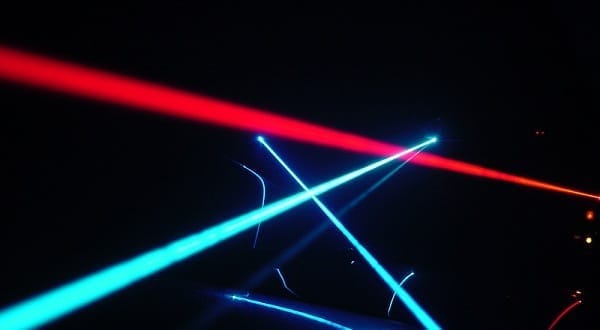Judging by the title of this piece, you might think for a second that I'm about to talk about fiber optics, right? Then, you saw the word "new" and got caught off guard! Yes, a new technology is being developed at Stanford university that will allow computers to communicate through photons rather than relying on electrical signals sent through copper.
The technology works by etching tiny slices of silicon in a way that will allow computer components to refract and split light into different colors, then bend it in different directions to carry tremendous amounts of data without using a single wire. Stanford's project has been reported in much more detail as part of an academic article on nanophotonics by Nature.Com's (not to be confused with the notorious MotherJones) Scientific Reports.
When light hits the earlier-mentioned slab of silicon, the bar code-like pattern will split up the light into different wavelengths then project them into a "T" shape. This shape is uniquely suitable for data transmission across multiple components within a system. Jelena Vuckovic, the electrical engineering professor at Stanford who headed the project, said that "light can carry more data than a wire, and it takes less energy to transmit photons than electrons." So, not only would a light-based system make it possible to boost internal component bandwidth, but it will also lead to more energy-efficient machines.
Theoretically, a computer made like this would have to deal with issues like dust piling up on the light beam transmitters and the tiny slices of silicon that the light is supposed to hit. Since we're dealing with tiny components, any sizable amount of dust can completely interfere with communications, causing system crashes. Should a "intrawireless nanophotonics"-type system ever come to fruition as a minimum viable product, it would probably best be mounted inside of a self-contained hermetically-sealed vacuum, which will not only provide excellent conditions for accelerating the speed at which the photons move, but also make it difficult (if not impossible) for dust to accumulate inside of its components. It can probably be safely stipulated that this technology will perhaps be highly beneficial to mobile systems, which need a high-speed energy-efficient alternative to the hardware that they're running right now.
So, in the end, Stanford is on the brink of making an internal communications medium for technology to function at a much higher bandwidth, and at lower wattage. Plus, if visible light will be used, manufacturers can encase their components in transparent glass or plastic to show off all the purdy colors from the light-splitting action!
What do you think of this new technology? Comment below!







